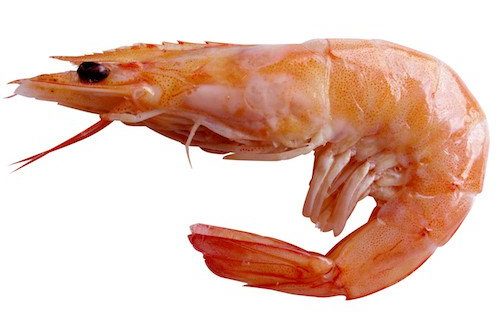Entomophagy, the short version
Meat production is one of the world’s greatest contributors to ecological destruction, climate change, and animal cruelty. Eating insects is substantially more environmentally friendly and humane. And though Westerners often consider it disgusting, the majority of cultures around the world have happily eaten insects for millennia.
Entomophagy, the longer version
Humans have been practicing entomophagy – eating insects – for tens of thousands of years. Today, people in 80% of the world’s countries regularly eat bugs by choice (The Guardian). In 2005, there were at least two billion people worldwide – over a quarter of the world’s population from Latin America to Africa to Asia – eating insects (FAO). They eat insects because they are tasty, nutritious (packed with protein and often Omega-3 acids), cheap, and easy to come by.
An emerging answer to climate change and animal cruelty
But entomophagy is not only an opportunity to expand our diets and find delicious food. It is also an important sustainability solution.
Meat production is a major contributor to our greenhouse gas (GHG) emissions. Grazing for animal production takes up 26% of Earth’s ice-free land. One-third of the land used for crops goes to feeding animals. Livestock produces a whopping 18% of global GHG emissions – more than all forms of transportation combined (Australian Geographic).

Insects use a fraction of the resources and land as meat. They generally have a much smaller carbon footprint than pork, chicken, and beef. The carbon footprint of eating beef is 6 to 13 times greater than that of mealworms, per unit of edible protein, for example (PLOS ONE).
Meat production is also the cause of unconscionable animal cruelty (Rolling Stone). We cage, torture, and slaughter billions of animals every year in the name of producing as much meat as we can, as cheaply as we can. Eating insects, arguably, offers a more humane route for getting protein. Rather than raise and eat animals with highly developed nervous systems, we can instead harvest insects that are much less likely to experience suffering.
But eating bugs is disgusting, right?
But eating insects seems unappetizing, if not outright repulsive, rights?
I certainly think so. I believe eating is gross because I’ve grown up in a culture that believes eating bugs is gross. I’ve been told eating bugs is gross since I was born. I’ve had no reason to question this.
But if eating bugs was inherently disgusting or unsanitary, how could it be so popular around the world?
 Consider shrimp. Most of us eat them regularly. We think they’re delicious. They’re something we splurge on when we want to treat ourselves. They also arguably look quite unappealing.
Consider shrimp. Most of us eat them regularly. We think they’re delicious. They’re something we splurge on when we want to treat ourselves. They also arguably look quite unappealing.

Now, here’s a cricket. We are repulsed by the idea of eating it. But look how similar they are to shrimp. Is there really any reasonable basis for thinking crickets are repulsive but shrimp aren’t?
Among the younger, more liberal parts of our society, sushi is a delicacy. We don’t think of it as disgusting or unpalatable, quite the opposite. But it wasn’t long ago when the vast majority of Americans wouldn’t even consider eating sushi. It was deemed disgusting, unsanitary, and unhealthy. According to a 2013 poll, 71% of Americans over the age of 65 would not be willing to try sushi.
If we can completely change our minds about sushi in the span of a couple of decades, why not insects?
So how do you eat insects exactly?
There are many ways to eat bugs. You could start by eating whole beetles. But if you do tend to get queasy thinking about eating insects, you could start off simply by eating something made with cricket powder (sometimes referred to as “cricket flour”). There are now many energy bars on the market that use cricket powder (see here, here, and here). You can also use cricket powder to make biscuits, pancakes, cookies, or a lot of other things you might use regular powder on (Food and Wine). No legs or antennae or thoraxes. Just powder packed with protein.
Or you could deep fry them so they are crispy, like french fries. Check out these Mexican chapulines.
Or maybe silkworms!

Entomophagy, in practice
More and more emerging business are trying to capitalize on new interest in entomophagy. One example is Arizona’s Chapul, a new company that sells cricket flour and energy bars made with cricket flour.
If you are like most of us and a bit put off by the idea of eating bugs, the first thing you can do is challenge yourself just to try them. Order a Chapul bar. Order the fried grasshoppers at your local restaurant. Make some baked goods out of cricket flour. You’ll likely find that they are not only tasty, but an easy way to shift away from a meat-intensive diet.
More on Entomophagy
- Insects as Sustainable Food Ingredients: Production, Processing and Food Applications
- Will We All Be Eating Insects In 50 Years? – by IFLScience
- U.N. Urges Eating Insects; 8 Popular Bugs to Try – by National Geographic
- To Save The World, Eat Bugs – by The Atlantic
Peter Schulte
Purpose Coach
Bellingham WA, USA / Lummi & Nooksack lands
Purpose statement: I reveal a world of beauty and goodness